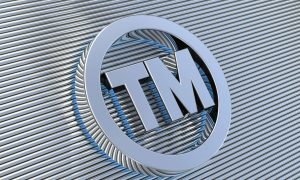Trademarks are a type of intellectual property that has a commercial purpose. Intellectual property is a business asset that includes “intangible” creations of the human mind — in other words, assets that you cannot feel or touch. There are four types of intellectual property that are recognized in the United States: trademarks, patents, copyrights and trade secrets.
Trademarks are logos, catch-words, slogans, images or even smells that help a business stand out in the market, avoid confusion with similar brands and help the consumer instantly identify a business. In short, they are highly valuable business assets that can be identified and registered with the government to deter copycats, distinguish a brand and, to a certain level, even control the behavior of competitors.
Well-publicized trademarks, like the Nike “check” or the McDonald’s “M”, are so powerful that consumers instantly think of those brands just by looking at a symbol or logo. Large corporations invest millions, if not billions, to develop, register and protect their intellectual property to ensure they gain or maintain their market share and competitive advantage in the marketplace.
2. What can you trademark?
You can trademark:
- The name of a brand (example: Nike)
- A logo of a brand (example: The swoosh logo)
- A slogan (example: “Just Do It”)
- A small (example: “Flowery Musk Scent” in Verizon stores)
3. What can’t your trademark?
You cannot trademark:
- A book, song, film or other creative and original works (those are protected by copyrights)
- An invention of a machine, manufactured good or a chemical formula (those are protected by patents)
- Business assets like your vendor list, customer list, industry secrets, marketing secrets, pricing or sales techniques (those are “trade secrets” and can be captured and protected through contracts)
4. How to register a trademark?
It’s important to first research whether or not you can actually trademark your business name, logo or slogan even before starting a trademark application, which is regulated by the United States Patent And Trademark Office (USPTO) in the United States.
The USPTO is a federal agency that grants patents and trademarks in the United States. All patent and trademark applications have to be registered through their official website to be recognized and protected at a national level
5. What are the steps in registering a trademark?
1. Research the USPTO’s trademark electronic search system (TESS) to ensure no one else has already registered the mark.
2. If you do not find anyone using the mark in your specific industry, register the mark with the USPTO (Note: Trademark law is highly specific and technical, and hiring an attorney who understands trademarks will help you avoid making mistakes in the filing process).
3. Once you file your trademark application, the registration will be assigned to a trademark examination attorney (an attorney who checks the technical requirements on behalf of the USPTO). They will research the mark, corroborate the evidence you have provided and ensure that you have the rights to that mark.
4. After the initial review of your application, the examination attorney will either request more information from you to proceed further, inform you that someone filed an objection to your registration or proceed to process your application by advertising your mark in their publication magazine, The Trademark Gazette.
5. If someone objects to your mark, the examination attorney will provide you the opportunity to defend your mark or provide evidence of why you should be allowed to register the mark.
6. The trademark registration process takes anywhere from 3-6 months, or longer if there are objections or missing pieces of information, to get approved.
7. Once approved, you will receive a Certificate to Authenticate your trademark from the USPTO (that’s when you can use the ® symbol to let others know that you own that mark).
Tips of trademarks: You cannot use the ® symbol until your registration has been approved. However, you probably should use the ™ sign in your logos, phrases, or slogans to give others notice that you are claiming that mark under a “Common Law Trademark” (a more informal way of using your mark) or that you intend to register the mark.
6. Why is a trademark important?
There are a plethora of advantages of registering your trademark with the USPTO as opposed to relying on the “Common Law Trademark” rules. Here are a few of them:
1. A trademark helps you launch and grow your business with more confidence. Once your trademark has been approved, you will own the exclusive rights to your brand name, slogans and/or logos (depending on what you have trademarked) and have the exclusive right to use that in your business.
2. Registering a trademark also stops copycats and enables you to control your mark. It helps you gain trustworthiness and authority in your market and helps you distinguish your brand from other competitors in your industry.
3. Acquiring a trademark helps you monetize your mark in several different ways. You can license your trademark, you can advertise with more confidence, you can sue copycats for damages and you can issue “cease and desist” letters to stop another business from infringing your trademark.
Is it worth registering your trademark?
If you believe that your business has commercial assets that are worth protecting, it might be a good idea to pursue a formal USPTO trademark registration as opposed to only relying on the common law trademark laws to protect your brand.
The post Everything You’ve Ever Wanted to Know About Trademarks appeared first on Entrepreneur
Original source: Entrepreneur






